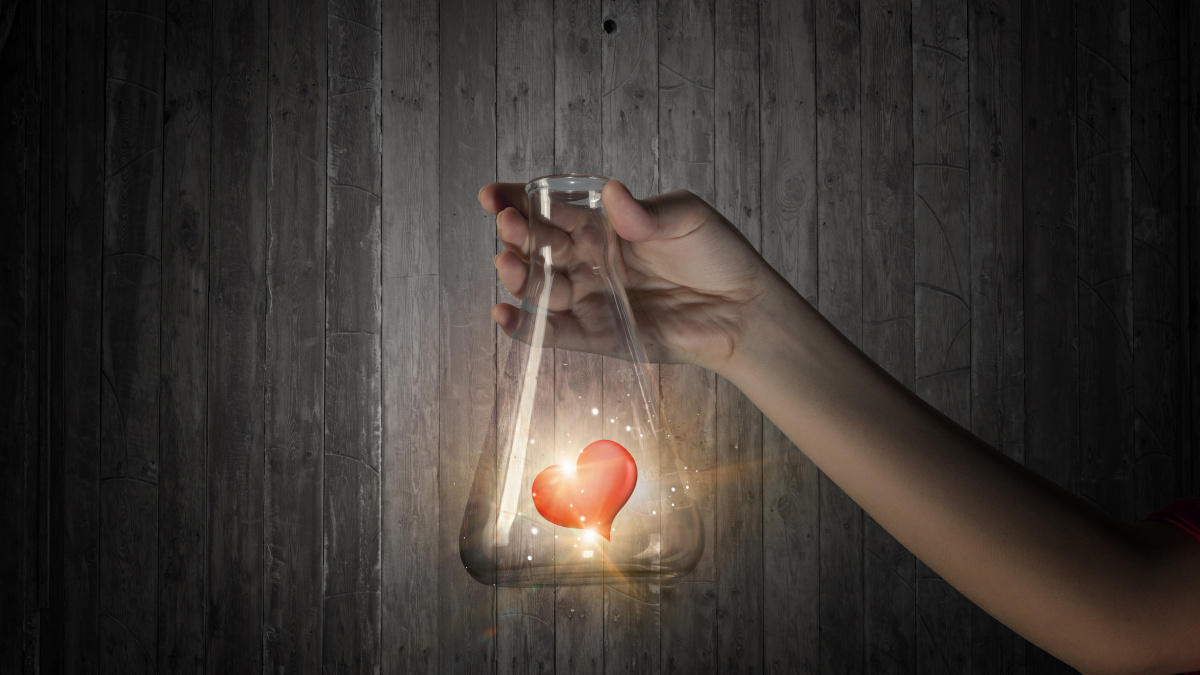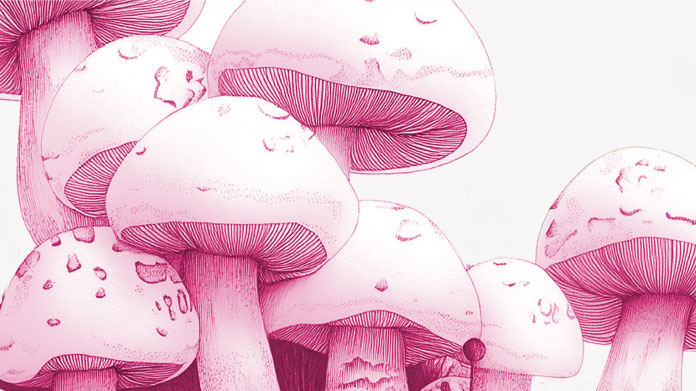The chemical formula for love … revealed
Desire, sex and attachment depend on chemical processes that take place within us. SuperSmart reveals the chemistry of love, at each stage of a romantic relationship.

The romantic encounter: a balance between noradrenaline and happiness hormone
All it takes is one look, at a face and/or body with features and symmetry that correspond to beauty criteria we’re not even aware of, and our orbitofrontal cortex comes to life, and our adrenal glands release noradrenaline.
Similar to adrenaline, this chemical messenger, emitted in response to stress, puts the body into a state of turmoil, producing a racing heart, dilated pupils, flushed cheeks, a loss of appetite and an inability to sleep.
If Nature hadn’t been so cleverly designed, we’d be catapulted into a state of shock by this surge of noradrenaline, inducing a flight response. But this wave of noradrenaline is followed by one of the happiness hormone, which gives us the motivation and strength to approach our object of desire, allowing the adventure to begin, and potentially develop … (1)
The sexual embrace: an explosion of hormones
Once contact has been established, the couple start their mating ritual, prompted by the species’ instinct for reproduction which seeks to initiate sexual relations (2).
This is driven once again by the happiness hormone, supported by male reproductive hormone and to a lesser degree, female reproductive hormone, in both men and women. To learn more about male reproductive hormone, check out our blog on the top 5 male reproductive hormone boosters. Desire may actually be the result of an imbalance between what are termed ‘excitatory’ mechanisms (based on the happiness hormone, the male reproductive hormone, and the female reproductive hormone) and ’inhibitory’ ones (based, in particular, on serotonin, prolactin and opioids).
Either way, sexual intercourse produces two possible direct effects:
- the release of high levels of the happiness hormone, especially when orgasm occurs;
- the production of the famous ‘attachment hormone’.
The first activates the reward circuit: the partner is associated with pleasure and physiological reward; he or she is missed when absent. In a different way, the second – related more to childhood - produces an attachment, and again, the partner is missed when absent(3).
In both cases, it is highly probable that the loved one’s absence produces a very specific reaction: a drop in serotonin levels… similar to that experienced by people suffering from depression. It’s that feeling of missing the partner.
It’s interesting to note that the way people in love function at a hormonal and behavioral level is actually similar to drug addicts (4)!
From passion to enduring love: which chemicals come into play here?
Once a couple has moved beyond this first, ‘sex-driven’ stage – being ‘blinded’ by love (it’s the love hormone rather than love that causes this), missing their ‘other half’, passionate reunions - they either break up, and go on to experience this ‘love at first sight’ explosion of hormones with somebody else, or they settle into a relationship of enduring love… which involves its own set of chemical reactions.
The most important chemical associated with building a lasting relationship is anandamide. This neurotransmitter plays a role in mood regulation, memory, appetite, pain, cognition, and emotions (5).
Having said that, it‘s neither magical nor everlasting: in order for levels of love hormone, happiness hormone, anandamide and serotonin to be maintained in either partner, the conditions that existed when these chemicals first emerged need to be reproduced as much as possible. In terms of sexuality, there are certain natural stimulants, such as damiana (its Latin name being Turnera aphrodisiaca), which can also provide effective support.
Kindness, affectionate gestures, looks, tender words, moments of playfulness, togetherness, exchanging compliments, sharing, dancing, embracing, etc.: shows of affection and tenderness are ultimately what sustains a long-lasting relationship.
References
- https://www.radiofrance.fr/franceculture/portrait-chimique-de-votre-cerveau-amoureux-8439109
- LEONTI, Marco et CASU, Laura. Ethnopharmacology of love. Frontiers in pharmacology, 2018, p. 567.
- BERLOW, Yossi. Biochemistry ofthe Human Orgasm.
- KLURFAN, Gustavo. “Toxicomanic” passion for an object: the sexual relation exists. In : Lacan and Addiction. Routledge, 2018. p. 119-130.
Keywords
2 Days
Great customer service - responsive …
I ordered from them and my item was unavailable for sometime. I was super happy when they reactivated my order and shipped my item which arrived very quickly. Great customer service.
Ruth Rueter
3 Days
Super fast shipping
Super fast shipping
Donald Borling
6 Days
Reputable companysearch and the number of…
The research and the number of selection of products.
NAKHJAVAN Shervin
19 Days
The Anti Aromatase is a great product
The Anti Aromatase is a great product. You just need to have constant inventory. Recently this product has been out of stock.
GEORGE Verne
21 Days
Great help on chat
Great help on chat. Knowledgeable and friendly.
Jason Argos
24 Days
Customer service was fast and friendly.
Customer service helped to stop the transaction process of the subscription. I appreciated that.
Greenie
25 Days
I order here due to the high quality of…
I order here due to the high quality of the products and the quick delivery of items - thank you
Barbara J
26 Days
SuperSmart's Eye Pressure supplements: highly recommended!
I purchase SuperSmart's Eye Pressure supplements regularly for over 5 years, and gotta say they are truly a wonderful product for my Glaucoma. Highly recommended if you have eye pain from your Glaucoma.
D. Martinez
30 Days
Quick service
Quick service
MONELL
31 Days
Speedy service.
Speedy service.
ROSENTHAL Marvin
35 Days
Clear website- Efficient
Clear website. Excellent search engine and fast delivery!
Mohamad Hussein
37 Days
They have great products.
They have great products.
Vickie
37 Days
Great Shipping Time!
You Have A Great Shipping Time! Praise The Lord!
DMHoge
39 Days
Doctor Recommended!
Good pricing, very good availability, doctor recommended (couldn't find what I needed anywhere else), and it took only a week to arrive (which I can't complain about).
Al
40 Days
Great product and fast shipping
Great product and fast shipping
Marie





